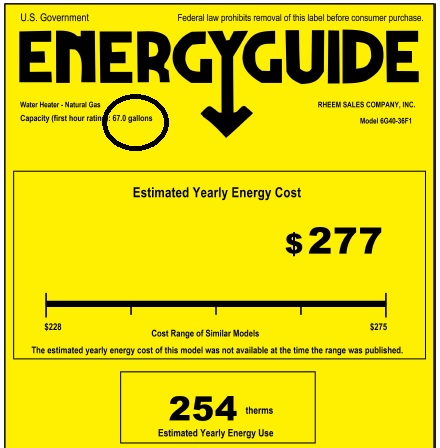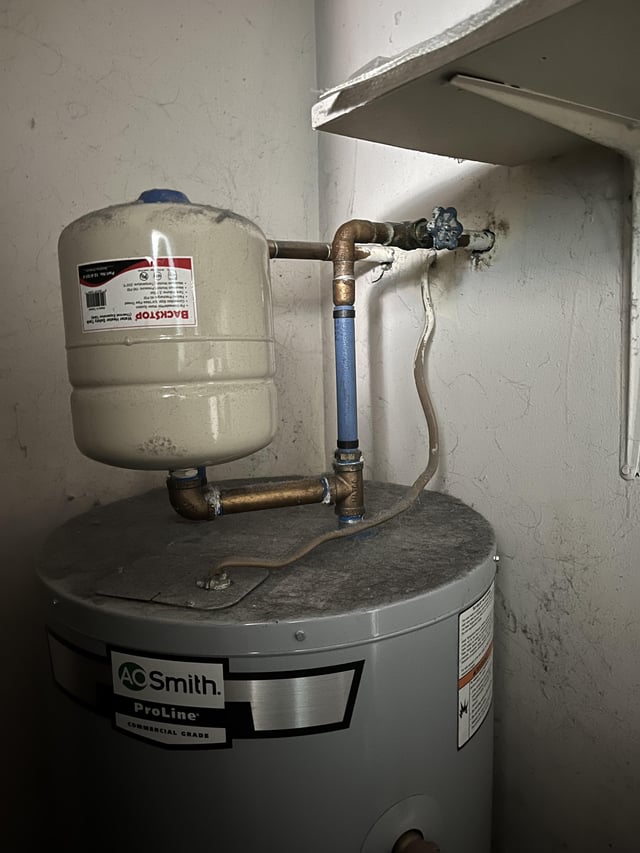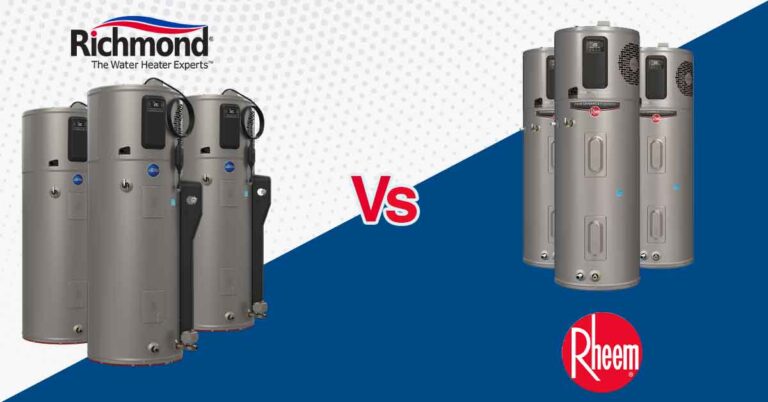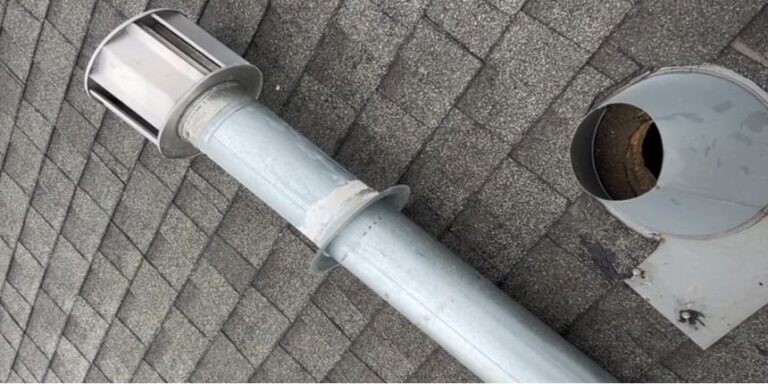Imagine stepping into a nice hot shower, only to be jolted by icy water halfway through. Frustrating, right?
This is where understanding your water heater’s recovery rate can save the day. The recovery rate tells you how quickly your water heater can heat up a new batch of water after some has been used.
This is crucial for anyone who hates cold showers or lives in a busy household where multiple showers, laundry, and dishwashing happen all at once.
By calculating the recovery rate, you can ensure your water heater meets your home’s needs efficiently. Stick around, and you’ll learn exactly how to make these calculations and keep those cold shower surprises at bay.
Understanding Recovery Rate
Water heaters play a crucial role in daily life. A key aspect to consider is the recovery rate. This rate affects how quickly your water heater can provide hot water. Understanding this concept helps in choosing the right heater for your needs.

Credit: blog.wallingfordsales.com
Definition And Importance
The recovery rate is the speed at which a water heater heats water. It’s measured in gallons per hour (GPH). A higher rate means more hot water in less time.
This is essential for homes with high hot water demand. Knowing the recovery rate ensures you never run out of hot water during peak times.
Factors Affecting Recovery Rate
Several factors influence the recovery rate. First, the type of fuel used impacts efficiency. Gas heaters generally recover faster than electric ones. Second, the heater’s size matters.
Larger units typically have higher recovery rates. Lastly, the water heater’s age can affect performance. Older units may have slower recovery due to wear and tear.

Credit: www.famous-supply.com
Calculating Recovery Rate
Understanding the recovery rate of a water heater is crucial for efficiency. It helps determine how quickly the heater can produce hot water again.
This calculation aids in choosing the right water heater for your needs. Let’s explore how to calculate the recovery rate.
Essential Formula
The recovery rate formula is simple. You need to know the BTU rating. This measures energy output.
Divide the BTU rating by 8.33, which is the weight of one gallon of water.
Then, divide by the temperature rise, usually 60 degrees Fahrenheit.
This gives you the recovery rate in gallons per hour.
Step-by-step Guide
First, find the BTU rating of your heater. It’s often labeled on the unit. Next, divide the BTU rating by 8.33.
This calculation shows the energy used to heat each gallon. Then, divide by the desired temperature rise. This step determines how many gallons can be heated per hour. Write down this number for easy reference.
Tools And Resources
A calculator is helpful for quick math. Manuals often provide necessary specifications. Online calculators can simplify this process.
They only need your BTU rating and temperature rise. These tools make calculating recovery rates straightforward.
Improving Efficiency
Calculating the water heater recovery rate helps improve energy efficiency. It determines how quickly a heater can reheat water. Understanding this rate ensures optimal performance and reduces energy costs.
Improving the efficiency of your water heater’s recovery rate can lead to noticeable savings on your energy bill.
The recovery rate is essentially how quickly your water heater can heat a full tank of water after it has been depleted.
A faster recovery rate means less waiting time for hot water, which is a comfort many of us cherish, especially during those chilly mornings. Let’s dive into practical ways to enhance this efficiency.
Insulation Techniques
Proper insulation is like giving your water heater a warm hug, helping it retain heat longer. Consider wrapping your water heater with a specially designed insulation blanket.
This simple addition can reduce heat loss and improve recovery rate. Another technique is insulating the hot water pipes. This helps maintain higher water temperatures as it travels from the heater to your faucet.
Even a small improvement in insulation can make a noticeable difference in efficiency.
Regular Maintenance Tips
Regular maintenance is crucial for optimal performance. Sediment buildup in the tank is a common issue that can hinder efficiency.
Draining your water heater once a year can clear out these particles, improving recovery rate and extending the life of your appliance. Inspect the anode rod, which prevents rust inside the tank.
A depleted rod leads to corrosion, impacting efficiency. Replacing it every few years can keep your water heater running smoothly.
Upgrading Components
Sometimes, the best way to boost efficiency is to upgrade certain parts. Consider replacing the thermostat if it’s malfunctioning.
A faulty thermostat can lead to inconsistent water temperatures, slowing recovery rate. Additionally, investing in a high-efficiency model with a better heating element can pay off in the long run.
Although it may require an upfront cost, the savings and improved performance can be significant. Have you noticed any changes after implementing these strategies? Share your experience in the comments below!

Credit: thehtrc.com
Comparing Water Heater Types
Understanding water heater recovery rate calculation helps in comparing different types. It measures how quickly a heater reheats water. This factor is crucial for choosing an efficient model for your home.
Deciding on the right water heater for your home can feel overwhelming, especially with the variety of options available.
The recovery rate, which measures how quickly a water heater can replenish hot water after use, varies among different types. Understanding these differences is key to making an informed choice that suits your household needs.
Tank Vs. Tankless
Traditional tank water heaters store a large volume of hot water, ready for use at any moment.
They have a specific recovery rate based on their size, which means once you run out of hot water, it takes time to heat more. On the other hand, tankless water heaters provide hot water on demand.
They have a quicker recovery rate since they heat water as you need it. This can be ideal if you often find yourself waiting for your tank to refill.
Electric Vs. Gas
Electric water heaters often have a slower recovery rate compared to gas models. They rely on electric heating elements, which can take a bit longer to heat the water.
This means if you have a large family, you might face some delays in getting hot water. Gas water heaters typically offer a faster recovery rate.
They use gas burners to heat the water, making them more efficient for larger households or homes that use a lot of hot water quickly.
Pros And Cons Analysis
Tank Water Heaters:
– Pros: Easier installation, lower upfront cost, stores hot water for immediate use.
– Cons: Limited hot water supply, slower recovery rate, occupies more space.
Tankless Water Heaters:
– Pros: Endless hot water supply, compact size, energy-efficient.
– Cons: Higher initial cost, may require upgrades to existing plumbing or gas lines.
Electric Water Heaters:
– Pros: Often cheaper to install, no emissions, safer for indoor use.
– Cons: Higher energy costs, slower recovery rate, less efficient in colder climates.
Gas Water Heaters:
– Pros: Faster recovery rate, lower operational cost, effective in cold weather.
– Cons: More complex installation, requires venting, potential for gas leaks.
When choosing a water heater, consider your family’s hot water usage and the energy efficiency of each type. What are your priorities cost, speed, or sustainability? Balancing these factors will guide you to the best decision.
Innovative Technologies
Innovative technologies in water heaters are changing the way we think about heating water.
With advancements aimed at improving efficiency and convenience, you can expect more from your water heating system. These innovations not only enhance your experience but also help in reducing energy costs and environmental impact.
Smart Water Heaters
Imagine waking up to a perfectly timed hot shower, without wasting energy. Smart water heaters offer this convenience by learning your usage patterns.
They adjust heating schedules automatically to ensure you have hot water when you need it, without unnecessary energy consumption.
Many smart water heaters can be controlled through smartphone apps. This means you can adjust settings or check the status of your heater while you’re out. If you’ve ever worried about leaving your water heater on during a vacation, smart technology has you covered.
These systems also send maintenance alerts. This proactive approach can prevent breakdowns, saving you from unexpected cold showers or costly repairs.
Energy-saving Features
Modern water heaters come with advanced energy-saving features. Insulation improvements reduce heat loss, which means hot water stays hot longer. This directly translates to less energy used, saving you money on your utility bills.
Look for heaters with high energy factor ratings. This rating indicates how efficiently a heater converts energy into hot water.
Opting for a higher rating means you’re choosing a model that uses less energy to produce the same amount of hot water.
Some systems even incorporate solar energy. By harnessing the sun’s power, you can significantly cut down on your reliance on traditional energy sources.
Have you considered how much you could save by integrating solar technology into your water heating?
Future Trends
The future of water heaters is leaning towards more sustainable solutions. With climate change concerns, manufacturers are focusing on reducing carbon footprints. This involves integrating more renewable energy sources and improving overall efficiency.
Tankless water heaters are gaining popularity. They heat water on demand, which means there’s no need for a storage tank.
This not only saves space but also eliminates the energy loss associated with maintaining a tank full of hot water.
Another trend is the use of hybrid water heaters. These systems combine traditional heating methods with heat pump technology.
The result is a system that uses significantly less energy. Could this be the solution to your high energy bills?
As technology continues to evolve, staying informed can help you make smarter choices. Which of these innovative technologies will you consider for your next water heater upgrade?
Cost-benefit Analysis
Understanding the cost-benefit of water heater recovery rate calculation is crucial. It helps in making informed decisions.
This analysis assesses the trade-off between upfront costs and savings. It also considers long-term advantages for homeowners. By evaluating these factors, you can determine the true value of your investment.
Investment Vs. Savings
The initial investment in a water heater can be significant. Yet, a high recovery rate can lead to savings on energy bills.
The faster a heater recovers, the less energy it uses. This efficiency translates to cost savings over time. Calculate the break-even point to see when savings surpass costs. This approach ensures your investment is wise and financially sound.
Long-term Benefits
Water heaters with high recovery rates offer more than just savings. They provide consistent hot water supply, enhancing comfort at home. Such heaters often have longer lifespans due to efficient operation.
Over time, this reduces the need for replacements and repairs. The long-term benefits extend beyond finances. They contribute to a sustainable and comfortable living environment.
Conclusion
Understanding water heater recovery rate is crucial. It helps manage energy use. Knowing this rate ensures efficient water heating. It aids in planning hot water needs. Calculating the recovery rate is simple. Follow the steps outlined above. Use this knowledge to make informed choices.
Save on energy bills. Improve home comfort without hassle. With this insight, you optimize water heater performance. Your daily routines become smoother. Enjoy consistent hot water availability. Maintain your heater’s health with proper usage. Now, you’re equipped to tackle water heating challenges effectively.



